TYRA BANKS
March 29, 2009 Leave a comment
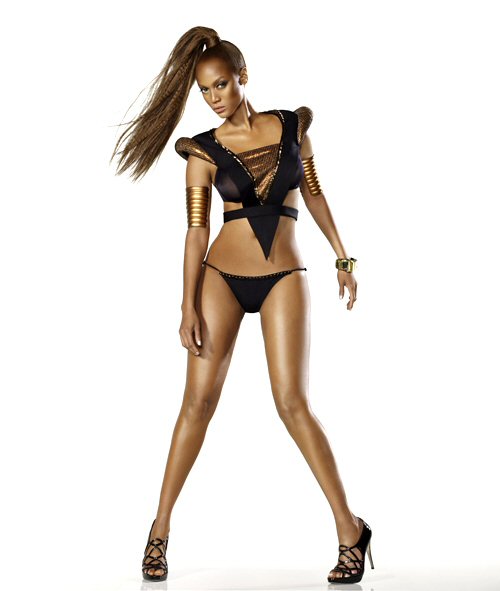 “Self-love has very little to do with how you feel about your outer self. It`s about accepting all of yourself. You`ve got to learn to accept the fool in you as well as the part that`s got it goin’ on.”
“Self-love has very little to do with how you feel about your outer self. It`s about accepting all of yourself. You`ve got to learn to accept the fool in you as well as the part that`s got it goin’ on.”
– TYRA BANKS
Tyra Lynne Banks (born December 4, 1973) is an American model, television host, actress, singer and businessperson.
Banks was born in Inglewood, California, the daughter of Carolyn (née London), a fashion manager and NASA photographer, and Donald Banks, a computer consultant. The couple divorced in 1980, when Banks was 6 years old. However, the relationship between her parents, and between her and her brother Devin Banks (born 1968), stayed friendly. Later, Carolyn married Clifford Johnson; she now goes by Carolyn London-Johnson. Banks attended John Burroughs Middle School and graduated in 1991 from Immaculate Heart High School in Los Angeles.
Banks began modeling in the 11th grade. She later went to Paris, France to do some runway modeling. Within Banks’ first week in Paris, designers were so entranced by her presence on the runway that she was booked for an unprecedented twenty-five shows – a record in the business for a newcomer. She has done extensive print and/or runway work for fashion/advertising giants, such as Anna Sui, Coors Light, CoverGirl, Badgley Mischka, Bill Blass, Cynthia Rowley, Chanel, Christian Dior, Dolce & Gabbana, Donna Karan, Gemma Kahng, H&M, Isaac Mizrahi, Maria Snyder, McDonald’s, Aislinn Dubois Modeling Agency, Michael Kors, Milk, Nicole Miller, Nike, Inc., Oscar de la Renta, Pepsi, Perry Ellis, Randy Kemper, Richard Tyler, Rifat Ozbek, Swatch, Todd Oldham, Tommy Hilfiger, Victoria’s Secret and Yves Saint Laurent. She has appeared on the covers of high-fashion magazines such as Vogue, Harper’s Bazaar, Cosmopolitan and Elle.
Banks’ television career began on the fourth season of The Fresh Prince of Bel-Air, in which she played lead character Will Smith’s old friend Jackie Ames. She made seven appearances in the series. Tyra’s ‘ first big screen role came in 1994 when she co-starred in the drama Higher Learning. She went on to co-star with Lindsay Lohan in the Disney film Life-Size, playing a doll named Eve who comes to life and has to learn how to live in the real world.
Banks was the first African American woman on the covers of GQ and the Sports Illustrated Swimsuit Issue. In 1997, she received the VH1 award for Supermodel of the Year. That same year, she became the first-ever African American chosen for the cover of the Victoria’s Secret catalog. In 1998, Banks authored a book entitled Tyra’s Beauty, Inside and Out. The book was advertised as a resource for helping women to make the most out of their natural beauty.
Other TV credits include Felicity, MADtv, Nick Cannon’s Wild ‘n Out (in which she was featured as a special guest host and team captain) and The Price Is Right (guest-starring as a “Barker’s Beauty”). She also appeared as a guest in the animated talk show Space Ghost Coast to Coast in an episode entitled “Chinatown.” Tyra has also starred in Love Stinks (1999), Love & Basketball (2000), Coyote Ugly (2000) and Halloween: Resurrection (2002).
She has also appeared in several music videos, including Michael Jackson’s “Black or White”, Tina Turner’s “Love Thing”, Mobb Deep’s “Trife Life” and George Michael’s “Too Funky” (with fellow supermodel Linda Evangelista). In 2004, she recorded her first single, “Shake Ya Body,” which had a music video featuring the final six contestants on America’s Next Top Model, Cycle 2. The video was world-premiered on UPN, but the single turned out to be a failure. On America’s Next Top Model, Cycle 2 Banks said, “Singing has been a passion of mine for a long, long time . . . six years on the down low – been ducking in and out of studios cutting tracks.” Later, on her talk show, she said, “I can’t believe I wasted six years of doing something that I didn’t finish . . . I was almost able to release my album T.Y.R.A., but since my music career hit rock bottom, I quit.”
Though “Shake Ya Body” was a failure, record producer Rodney Jerkins told Jet magazine in 2004 that Banks “has what it takes to pull it off…she had a hungriness to want to be in the studio all the time. Some people want to be divas in the studio and work for three or four hours. You had to tell Tyra to stop, or she will keep you going.”] As for her voice, Jerkins said, “People will be shocked. She can really sing. She’s like between soprano and high-alto. I challenged her vocally. I pushed her, but not too far. I pushed her where vocally it fit the track.”
Banks released a single with NBA player Kobe Bryant, entitled “K.O.B.E.,” which was performed on NBA TV. She also had a single on the Disney movie Life-Size called “Be A Star.”
Banks retired from modeling in May 2005 to concentrate on her television career. She walked the runway for the final time at the 2005 Victoria’s Secret Fashion Show.
Currently, Banks can be seen on television as the hostess, judge and executive producer of The CW Television Network show America’s Next Top Model. In addition, she hosts The Tyra Banks Show, a daytime talk show aimed at younger women, which premiered on September 12, 2005. The show features stories about everyday people mixed in with celebrity interviews, much like the early format of The Oprah Winfrey Show. Under the slogan “Every woman has a story…and it happened to Tyra too,” Banks promotes her show using emotional flashbacks to her own childhood and adolescence. Many of the episodes deal with issues facing women today. Banks and other experts give women advice on fashion, relationships and more. The first two seasons of the show were recorded in Banks’ hometown of Los Angeles but, beginning with the fall 2007 season, the show moved to New York City. In 2008, Banks won the Daytime Emmy Award for her work and production on The Tyra Banks Show.
In late-January 2008, Banks got the go-ahead from The CW Television Network to start work on a new reality television series based on fashion magazines called Stylista. The show premiered on October 22, 2008.
SOURCE: Wikipedia, quotelucy.com
TYRA BANKS IN MOTION
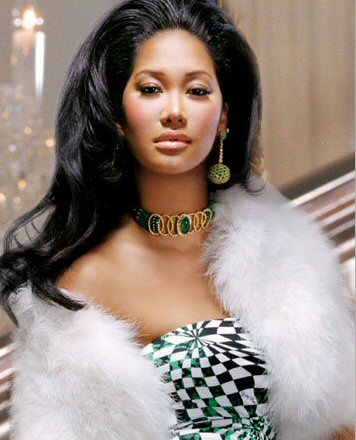 “People should know whatever it is you love to do. I am a living testament to the fact that you can do it. You can do whatever it is you put your mind to and you can do it in stilettos.”
“People should know whatever it is you love to do. I am a living testament to the fact that you can do it. You can do whatever it is you put your mind to and you can do it in stilettos.”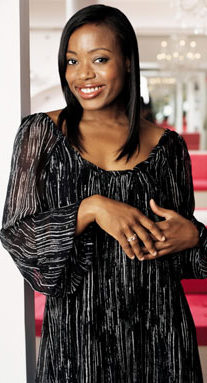 ” . . . You can spend your whole day wondering about racism, but in most cases I find it is just better to ignore it–rise above racism.”
” . . . You can spend your whole day wondering about racism, but in most cases I find it is just better to ignore it–rise above racism.”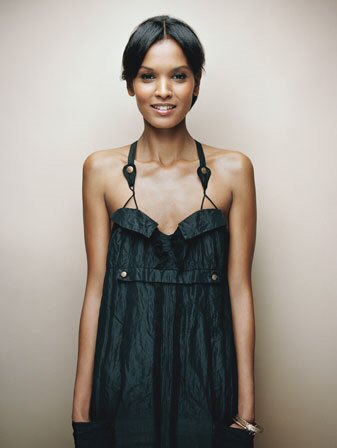 Liya Kebede (born January 3, 1978.) is an Ethiopian model who has appeared on the cover of US Vogue twice. According to Forbes, Kebede was eleventh-highest-paid top model in the world.
Liya Kebede (born January 3, 1978.) is an Ethiopian model who has appeared on the cover of US Vogue twice. According to Forbes, Kebede was eleventh-highest-paid top model in the world.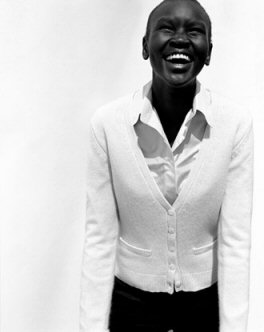 Alek Wek (born 16 April 1977) is a Sudanese model who appeared on the catwalks at the age of 18 in 1995. She is from the Dinka ethnic group in the Sudan, but in 1991 she and some family members fled to Britain to escape the civil war between the Muslim north and the Christian south of the Sudan. She later moved to the United States.
Alek Wek (born 16 April 1977) is a Sudanese model who appeared on the catwalks at the age of 18 in 1995. She is from the Dinka ethnic group in the Sudan, but in 1991 she and some family members fled to Britain to escape the civil war between the Muslim north and the Christian south of the Sudan. She later moved to the United States.




